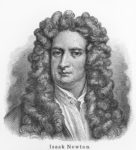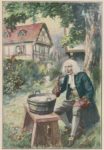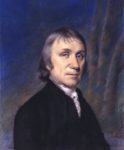One passage of the Bible that a lot of people stumble over is found in Joshua 10. The Israelites were engaged in a battle with Adonizedek, King of Jerusalem. In order to gain success, Joshua prayed to the Lord, “Sun, stand still at Gibeon.” As a result of this prayer, the sun stayed in the sky for a whole day. In other words, sunset to sunset lasted 48 hours instead of the normal 24. read more …read more Source: Creation Moments
The Aye-Aye is one of the strangest little monkeys on earth. Its peculiar features bear witness that it was specially designed and created to fill a unique niche in nature, not a chance development of evolution. read more …read more Source: Creation Moments
By Sarah Chaffee On this episode of ID the Future, Andrew McDiarmid reads a popular essay by philosopher of science Stephen Meyer on the detectability of intelligent design in nature. The article recently appeared in Sapientia, and here at Evolution News. In the piece, Meyer explains the logic by which we routinely know there’s been a creative intelligence at work. Meyer unpacks this logic in terms of information, which we can see clearly in the cell, but elsewhere in nature, too. He also shows how this detection method is an established part of the historical sciences. Please consider donating to [More]
By Creation Moments The $250 million Human Genome Project is attempting to map all the human genes. Their preliminary findings were released sometime in the year of 2000. Some observers have been saying that the human genome project will define what it means to be human. read more …read more Source: Creation Moments
By Sarah Chaffee On this episode of ID the Future from the vault, University of British Columbia at Vancouver philosophy faculty member Richard Johns discusses his paper in the journal Synthese titled “Self-organisation in dynamical systems: a limiting result.” In the paper, Dr. Johns argues that there are limits to the complexity of structures that can be produced by self-organization. Johns shows that Darwinian evolution is actually a type of a self-organizing process, and that it too is limited in the types of biological structures it can produce. Please consider donating to support the IDTF Podcast. Your browser does not [More]
Often naturally occurring medicines work better and more gently than man-made concoctions. Ginger has long been accepted as a natural treatment for nausea. Several modern studies have confirmed that ginger can even work better than modern nausea medicines such as Dramamine®. read more …read more Source: Creation Moments
The solar system is wonderfully designed for life—and for fascinating science, too! Both benefits reveal the richness of the Lord’s creativity. Discovering the truth the Lord has hidden for us to search out and find is the fun and thrill of science. What examples have we discovered in our own solar system? Listen: The Institute for Creation Research
Our moon is unusually large, but it’s just the right size to aid life on Earth. As a masterpiece of design, it shouts God’s creation. How does lunar science support biblical truth? Listen: The Institute for Creation Research
Creation scientists observe hair, feathers, and scales as unique structures revealing design. Evolutionary naturalists disagree, of course, maintaining a common origin for these skin appendages. Why does this issue matter? And how does this impact the study of origins and biological history? Listen: The Institute for Creation Research
“Survival of the fittest” is an essential principle of evolution. This principle has not only been applied to animals, but also to human beings, as a social theory. read more …read more Source: Creation Moments
For generations cave guides have been telling cave visitors that the stalagmites and stalactites that they see around them grow at incredibly low rates. The figure that is usually given is one inch per century for stalactites (they are the ones that hang down). That estimate, however, was not based on any scientific research. read more …read more Source: Creation Moments
By Sarah Chaffee On this episode of ID the Future, biologist Jonathan Wells talks with Ray Bohlin about a conversation he imagined between evolutionists Richard Dawkins and Dan-Eric Nilsson, and published recently at Evolution News. Dawkins had lectured (in real life) on Nilsson’s computer simulation work, showing the human eye could have evolved easily and quickly. What would the two of them have said when Nilsson contacted Dawkins and told him, “I’m sorry, Richard, but I didn’t do that simulation?” Wells imagines them talking about rushing the work on that simulation. But then, what about the next conversation when the [More]
By Sarah Chaffee On this episode of ID the Future, German paleo-entomologist Dr. Günter Bechly explains the real, living problem of living fossils — a term resisted by evolutionists though coined by Darwin himself and undeniably a living reality. These plants and animals have remained unchanged over eons: in the case of the horseshoe crab, nearly half a billion years through enormous upheaval. Your browser does not support playing Audio, please upgrade your browser or find our podcast on podOmatic Download Episode …read more Source: id the future
John records in his Gospel that the first miracle of Jesus was performed at the wedding at Cana in Galilee. During the course of the celebrations, they were found to have run out of wine. Jesus instructed the servants to fill six 20-gallon stone jars with water, and He turned this 120 gallons of water into wine. read more …read more Source: Creation Moments
Most mammals in Australia are marsupials. That is one of the things that makes Australia so special to those of us elsewhere in the world who may never have been there. Think of Australia, and most of us think of kangaroos, koalas, and wombats. Placentals, like rats and rabbits, are normally pests, introduced in colonial times. read more …read more Source: Creation Moments
By Sarah Chaffee On this episode of ID the Future, Dr. Ann Gauger shares more about her experimental work evolving enzymes in the lab, honing in on how complex and specified enzymes are generated and testing Darwinian predictions experimentally. Listen in as she shares what her most recent study discovered about an insurmountable problem for evolution. Ann Gauger received a BS in biology from MIT, and a PhD in developmental biology from the University of Washington, where she studied cell adhesion molecules involved in Drosophila embryogenesis. As a post-doctoral fellow at Harvard she cloned and characterized the Drosophila kinesin light [More]
Everyone loves bacon; or maybe every scientist loves Bacon. The Bacon to which I am referring is Sir Francis Bacon, later Viscount St. Alban, 1561-1626. It is to him that we owe a debt of thanks for the introduction of an early scientific method. read more …read more Source: Creation Moments
There is a myth perpetrated by some that Flood Geology is an invention of the 20th Century, not supported, except implicitly, by geologists of earlier eras. This is not the case. One man who can prove this myth to be false is John Woodward, a contemporary of Isaac Newton. read more …read more Source: Creation Moments
By Sarah Chaffee On this episode of ID the Future, biophysicist Cornelius Hunter explains how mitochondria, the powerhouse of eukaryotic cells, pose a powerful and newly acute problem for evolution. For years evolutionists thought that some early cells must somehow have brought other cells inside of them, and those other cells then mysteriously evolved into mitochondria. But recent research undermines that notion. Why do many evolutionists then still cling to the idea? Dr. Hunter’s answer explains how a lot of evolutionary thinking persists in the face of mounting contrary evidence.Please consider donating to support the IDTF Podcast. Your browser does [More]
By Sarah Chaffee On this episode of ID the Future from the vault, biologist Ann Gauger discusses an article in BIO-Complexity that she and Douglas Axe authored. Listen in as Dr. Gauger shares how she tested the changes necessary to evolve enzymes by a Darwinian mechanism. Ann Gauger received a BS in biology from MIT, and a PhD in developmental biology from the University of Washington, where she studied cell adhesion molecules involved in Drosophila embryogenesis. As a post-doctoral fellow at Harvard she cloned and characterized the Drosophila kinesin light chain. Her research has been published in Nature, Development, and [More]
How do scientific measurements and fundamental constants reflect the Creator’s divine hand? Our universe permits physical, interactive life only because these and many other numbers are exquisitely and independently balanced. How did such incredibly fine-tuned numbers come about: by chance and time, or by plan and purpose? Listen: The Institute for Creation Research
It surely is not possible to learn science without coming across the name of Sir Isaac Newton, one of history’s greatest scientists. While many scientists concentrate on one field of study, Newton is famous for three: light, calculus, and gravity. read more …read more Source: Creation Moments
By Sarah Chaffee On this episode of ID the Future, paleoentomologist Günter Bechly discusses the new dragonfly fossil that he discovered, described, and named after intelligent design theorist Michael Behe–Chrismooreia michaelbehei. Bechly describes what’s remarkable about this stunning fossil, explains some problems dragonflies poses for Darwinism, and shares some of the strangely uninformed criticisms he’s received for naming the species after Behe. See pictures of the fossil on Evolution News. Please consider donating to support the IDTF Podcast. Your browser does not support playing Audio, please upgrade your browser or find our podcast on podOmatic Download Episode …read more Source: [More]
In another Creation Moment, we discussed the fact that the famous scientist and mathematician Isaac Newton believed Genesis to be a true book. We would probably not want to follow Newton’s theological beliefs, given that they were Arian in nature, but it is not often realized that Newton wrote extensively on the subject of history. read more …read more Source: Creation Moments
Joseph Priestley was, by all accounts, not a pleasant man. He was brought up in a dissenting chapel in Heckmondwicke, Yorkshire, having been born in Birstall, near Leeds, Yorkshire, in 1733. That chapel believed the Bible to be completely true, but Priestley began to develop ideas that rejected the divinity of Christ and the Virgin Birth. In adulthood, he was, therefore, a Unitarian. read more …read more Source: Creation Moments
The Bible’s message requires absolute accuracy of every word of its written text. Jesus referenced the eternal nature of His Word. Even the letters themselves—the “jots” and “tittles”—are under God’s authority. What is the consistent message of Scripture? Can we be certain the Bible is without error? Listen: The Institute for Creation Research
The Apostle Paul warned Timothy about pseudoscience and “false knowledge.” Today, many twist the meaning of Scripture to promote their interpretation of scientific data. What is the root of this issue? And how should Christians handle apparent conflicts between the Bible and science? Listen: The Institute for Creation Research

































